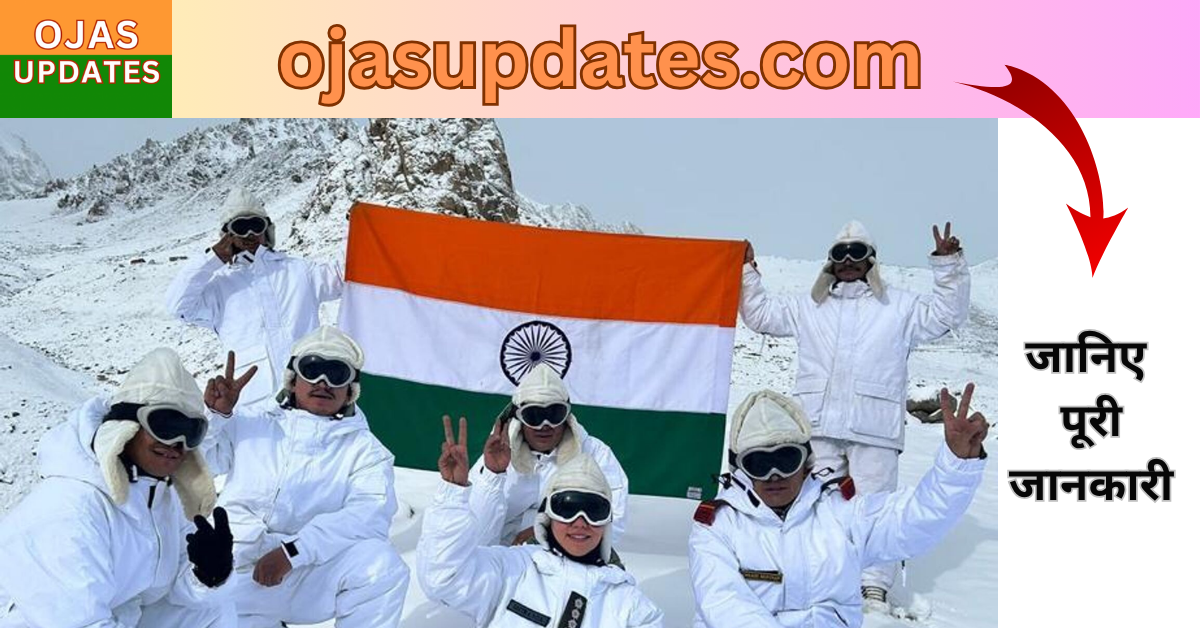At over 20,000 feet above sea level, in a frigid land of snow, ice, and howling winds, lies the Siachen Glacier — the highest and most treacherous battlefield on Earth. Here, Indian soldiers maintain a round-the-clock vigil in some of the harshest conditions imaginable. Among the many forward posts on this glacial frontier, Bana Post stands as a symbol of valor, strategic endurance, and national pride.
This post, located at an altitude of approximately 22,000 feet, is named after Honorary Captain Bana Singh, a Param Vir Chakra awardee whose daring assault on an enemy post in 1987 changed the course of Siachen history.
The Origins of the Conflict
The Siachen Glacier is located in the eastern Karakoram range in the Himalayas. It lies just northeast of the point where the Line of Control (LoC) between India and Pakistan ends — at NJ 9842. The LoC agreement of 1972 (post the Indo-Pak War of 1971) left the region beyond NJ 9842 vaguely demarcated, with the line described as extending “north to the glaciers.” This ambiguity led to both India and Pakistan claiming the area.
In the early 1980s, Pakistan began granting mountaineering expeditions permits to the Siachen region, strengthening its claim. India responded with Operation Meghdoot in April 1984, launching a preemptive move to occupy the key passes and high ground on the glacier. This operation marked the beginning of the ongoing military deployment on the Siachen Glacier.
Bana Post: A Symbol of Courage
One of the most strategic points on the glacier was a high-altitude post called “Quaid Post”, named by the Pakistan Army after Muhammad Ali Jinnah, the founder of Pakistan. Perched at 21,153 feet, it overlooked crucial Indian positions and posed a significant threat.
In June 1987, Naib Subedar Bana Singh, then a young soldier in the Indian Army’s Jammu and Kashmir Light Infantry, led a daring assault under extreme weather conditions to capture the post. Braving blizzards, vertical ice walls, and enemy fire, his team scaled the steep slopes and overran the enemy bunkers. The post was renamed Bana Post in his honor.
Today, Bana Post remains the highest permanently manned military outpost in the world. It is both a symbol of India’s resolve and a testament to the bravery of its soldiers.
Why Is Siachen Strategically Important?
Critics often question the relevance of maintaining a military presence in such a hostile and uninhabitable region. The cost in terms of both lives and money is undeniably high. However, the strategic significance of the Siachen Glacier cannot be ignored:
- Geographic Importance: The glacier lies between Pakistan-occupied Gilgit-Baltistan to the west and Chinese-controlled Aksai Chin to the east. If India vacated Siachen, it would create a strategic vacuum that could allow Pakistan and China to connect and further threaten Ladakh.
- High Ground Advantage: Control of the glacier ensures India holds the commanding heights over enemy movements in the region.
- Monitoring Cross-Border Activities: The deployment helps India monitor any potential infiltration or movement in the area, particularly in light of increased military cooperation between China and Pakistan.
- Defense of Ladakh: Holding Siachen protects the sensitive Nubra Valley and the Leh region in Ladakh from hostile encirclement.
The Human Cost
The real enemy on the Siachen Glacier is not just the adversary across the border — it is the weather. Temperatures routinely drop to -60°C. Avalanches, frostbite, snow blindness, and altitude sickness are constant threats. In fact, more soldiers have died due to weather-related incidents than actual combat.
India has invested heavily in improving infrastructure, logistics, and troop welfare on the glacier. Air-dropping supplies, high-altitude clothing, oxygen support, and portable shelters are part of daily life for the soldiers stationed there.
The Army’s Resolve and Sacrifice
The Indian Army’s continued presence in Siachen showcases the commitment, discipline, and indomitable spirit of its soldiers. It is not just about defending a piece of ice-covered land — it is about safeguarding sovereignty, asserting strategic control, and honoring the sacrifices made by generations of soldiers.
The soldiers who serve at Siachen are rotated frequently, and each stint is a badge of honor. The training, preparation, and psychological strength required to serve at Bana Post and other forward posts are unmatched anywhere in the world.
Conclusion
The Siachen Glacier is not just a battleground — it is a national commitment. Bana Post, towering high above in its icy isolation, tells the story of how ordinary men become legends in the face of impossible odds. As long as that post flies the Indian tricolor, it serves as a constant reminder that freedom and security come at a price — a price paid by the fearless warriors of the Indian Army.

